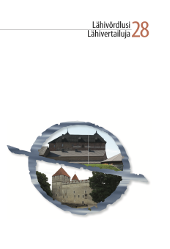“Ajattele maailmanlaajuisesti, toimi paikallisesti” (J. G. Granö). Maantieteen termistön kehittäminen 1920-luvun Virossa ja Suomessa
Development of geographical terms in Estonia and Finland in the 1920s
Author(s): Eve Mikone, Päivi LaineSubject(s): Language studies, Education, Recent History (1900 till today)
Published by: Eesti Rakenduslingvistika Ühing (ERÜ)
Keywords: terminology; geography; national language; Estonian; Finnish;
Summary/Abstract: Our article deals with the development of geographical terms in Estonia and in Finland during the 1920’s. This period is especially interesting because the language of instruction in the respective countries changed to Estonian and to Finnish at roughly the same time. Te development of scientific terminology in different fields was started on both sides at the same time as well. Te Finnish geographer Johannes Gabriel Granö went to Tartu in 1919 to establish a Department of Geography at the University of Tartu. He was the first person to teach geography in Estonian and he needed a vast amount of professional terminology. Previously the teaching languages were German and Russian. During his short stay (3 years), J. G. Granö started developing geographical terminology in Estonian. At the same time, he also made efforts to consolidate the use of new scientific terminology. J. G. Granö established the committee of geographic terminology at Tartu University, but he never published any research in Estonian. Te results of J. G. Granö’s work can be found in the different areal studies of Estonia. Te main editors of these books were J. G. Granö’s students. Te study of the development of Estonian scientific terminology postulates that nearly all new scientific terms were invented by J. V. Veski. We assume that his role was in many areas primarily consulting, not inventing. Many of J. G. Granö’s invented terms are nowadays very common, such as ürgorg, voor, and vallseljak; even many Estonian place names (Soomaa, Lahemaa, Vooremaa) were likely invented by J. G. Granö. Back in Finland, J. G. Granö continued his work on geographical terminology in Finnish. His main theoretical study, Pure Geography (1930), brings together the theoretical basis which was developed in Estonia and practical work done in Finland. J. G. Granö highlighted the importance of doing science in national languages and reporting results in international languages.
Journal: Lähivőrdlusi. Lähivertailuja
- Issue Year: 2018
- Issue No: 28
- Page Range: 242-262
- Page Count: 21
- Language: Finnish

